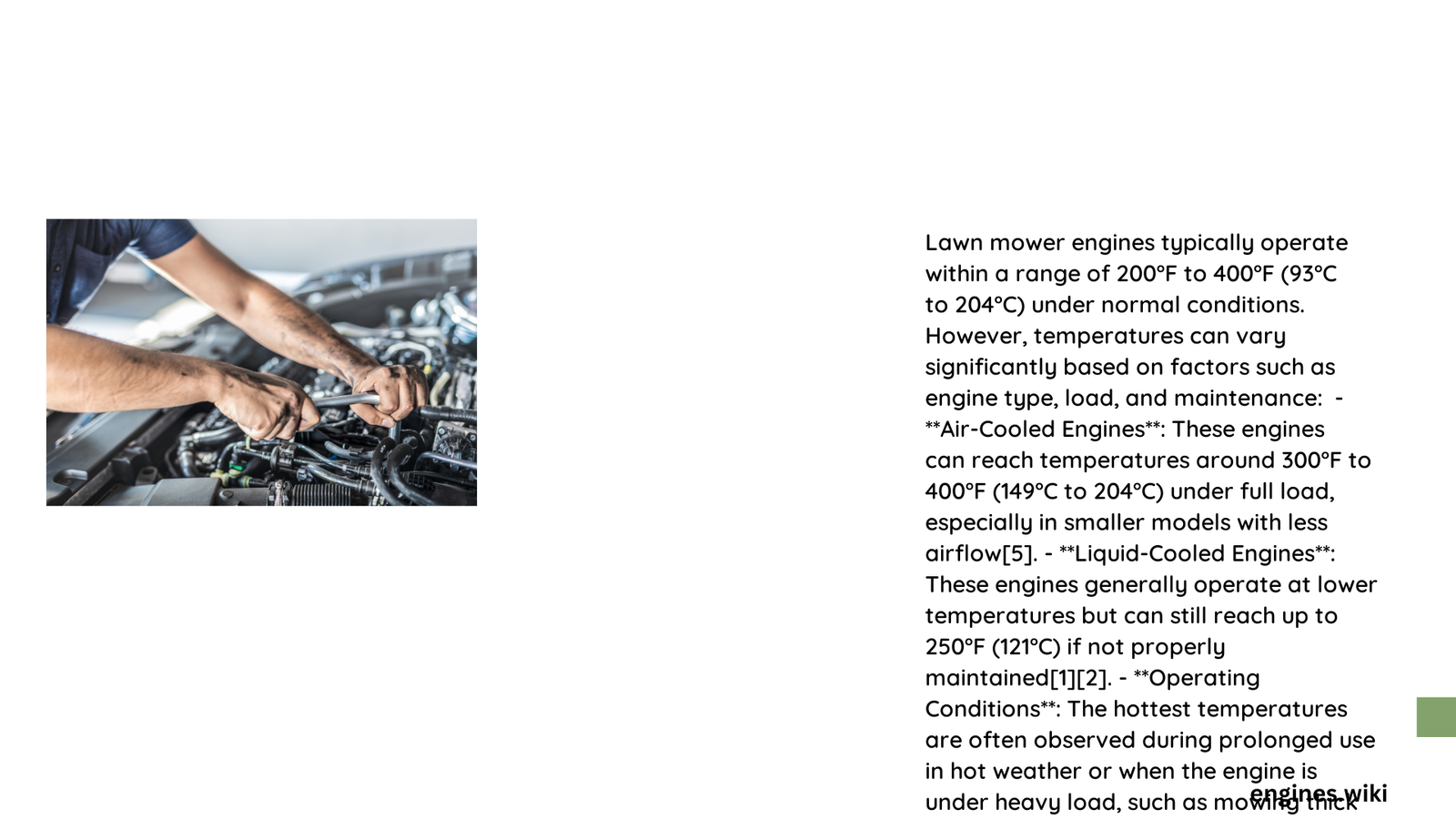Lawn mower engines generate substantial heat during operation, with temperatures typically ranging between 180°F to 250°F depending on environmental conditions, engine type, and maintenance. Understanding these temperature dynamics is crucial for preventing potential engine damage and ensuring optimal performance. Proper knowledge of engine heat can help homeowners and professionals maintain their equipment effectively and extend its operational lifespan.
What Temperature Ranges Do Lawn Mower Engines Typically Reach?
Air-Cooled Engine Temperature Spectrum
Lawn mower engines, predominantly air-cooled, experience distinct temperature characteristics:
| Engine Type | Temperature Range | Critical Observations |
|---|---|---|
| Air-Cooled Engines | 180°F – 210°F | Normal Operating Range |
| Oil Temperature | 230°F – 250°F | Hot Summer Conditions |
| Maximum Threshold | 260°F | Potential Damage Zone |
Factors Influencing Engine Heat
Several critical factors contribute to lawn mower engine temperatures:
- Ambient Environmental Temperature
- Higher external temperatures increase engine heat
-
Operating in 100°F environments can significantly elevate engine temperature
-
Operational Conditions
- Continuous high-speed mowing generates more heat
-
Terrain complexity impacts engine workload
-
Maintenance State
- Clean air filters improve cooling efficiency
- Regular maintenance prevents excessive heat buildup
What Causes Lawn Mower Engine Overheating?

Primary Overheating Triggers
Lawn mower engines can overheat due to multiple interconnected reasons:
- Blocked cooling fins
- Insufficient oil levels
- Dirty air filters
- Prolonged continuous operation
- Restricted airflow around engine components
Symptoms of Potential Overheating
Recognizing early warning signs helps prevent significant engine damage:
- Unusual engine noise
- Reduced performance
- Excessive heat radiation
- Difficulty maintaining consistent speed
- Extended cool-down periods after operation
How Can You Prevent Lawn Mower Engine Overheating?
Proactive Maintenance Strategies
- Regular Cleaning
- Remove debris from cooling fins
- Clean air filters monthly
-
Ensure unobstructed ventilation
-
Proper Lubrication
- Use recommended oil grades
- Check oil levels before each use
-
Replace oil according to manufacturer guidelines
-
Operational Best Practices
- Avoid continuous high-speed mowing
- Allow brief cooling periods
- Operate in cooler parts of the day
- Maintain consistent engine speed
What Are Safe Temperature Limits?
Critical Temperature Thresholds
- Normal Operating Range: 180°F – 210°F
- Caution Zone: 230°F – 250°F
- Danger Zone: Above 260°F
Recommended Cooling Techniques
- Maintain higher engine speeds during cool-down
- Avoid immediate engine shutdown
- Provide adequate ventilation
- Use synthetic oils for better heat management
Expert Recommendations
Professional lawn equipment technicians suggest:
– Invest in quality temperature monitoring tools
– Perform regular comprehensive engine inspections
– Replace worn components promptly
– Follow manufacturer-specific maintenance schedules
Technical Insights
Modern lawn mower engines are designed with sophisticated cooling mechanisms, but understanding their thermal dynamics remains crucial for optimal performance and longevity.
Pro Tip: Always consult your specific lawn mower’s manual for precise temperature management guidelines, as recommendations can vary between different engine models and manufacturers.
Conclusion
Effective temperature management requires a combination of proactive maintenance, operational awareness, and understanding your lawn mower’s unique characteristics.
